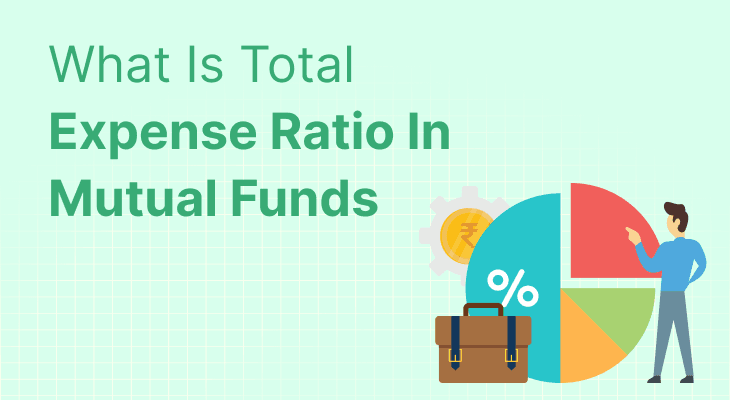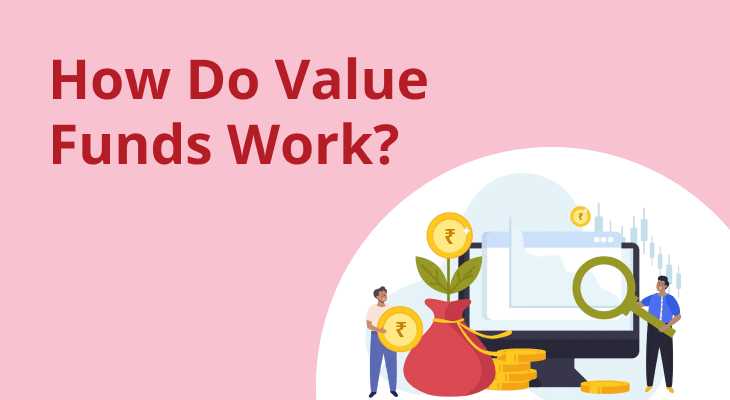
What Is Total Expense Ratio In Mutual Funds
When you invest in mutual funds, it's important to understand how various costs affect your returns. One key cost metric is the Total Expense Ratio (TER), a figure that determines how much of your investment goes toward managing the fund. Understanding TER can help you make better investment decisions by providing insight into the overall cost of owning a mutual fund.
What is the Total Expense Ratio (TER) in Mutual Funds?
The Total Expense Ratio (TER) constitutes the annual expenses that a mutual fund charges investors for managing the fund. These charges are a percentage value of the fund’s average net assets. Essentially, TER shows how much an investor pays the fund house for its professional services like management fees, marketing costs, and administrative fees.
For example, if a mutual fund has a TER of 1.5%, then 1.5% of your investment goes toward covering the fund’s annual expenses.
Key Components of TER in Mutual Funds
The Total Expense Ratio (TER) in mutual funds is composed of several distinct costs, each playing a crucial role in the fund's overall operation:
Management Fees: The largest component, management fees, compensates the fund's professional team responsible for handling investment strategies. Actively managed funds have higher fees compared to passive funds like index funds.
Administrative Expenses: These are operational costs that cover record-keeping, legal and accounting services, compliance reporting, and investor communications. These charges help in maintaining the smooth functioning of the mutual fund.
Distribution and Marketing Fees: Mutual funds often spend a portion of their expenses on distribution, promotion, and sales efforts to attract investors. These costs include commissions paid to brokers and distributors who sell the fund to potential investors.
Custodian and Transfer Fees: Custodian fees cover the expenses associated with safeguarding the fund’s assets. Transfer agent fees, on the other hand, manage the documentation required for buying, selling, and transferring mutual fund units between accounts.
Fund Administration Costs: These cover the costs associated with the daily operations of the fund, including fund accounting, tax reporting, and audit-related expenses. It also includes the costs of producing and distributing annual reports and other documents.
Registrar Fees: These fees pertain to keeping track of investor records and processing transactions, whether purchases, redemptions, or dividend payouts. Registrars handle the official communication between the mutual fund and its investors.
The combination of all these expenses ultimately affects the fund’s overall cost, and higher costs can directly reduce investor returns over time. Hence, understanding the breakdown of TER is essential when comparing mutual funds for your portfolio.
Limits Set by SEBI on TER in Mutual Funds
The Securities and Exchange Board of India (SEBI) has implemented guidelines on the maximum TER that a mutual fund can charge its investors to protect them from exorbitant fees. The upper limit on TER is generally lower for large funds with significant assets under management (AUM), as it ensures economies of scale are passed on to the investors. Smaller funds may have higher TER limits since managing smaller asset bases typically incurs higher relative costs.
Here’s a summary of SEBI’s current limits:
Equity-oriented funds have a maximum TER of 2.25%.
Debt-oriented funds can charge a maximum TER of 2%.
Index funds and exchange-traded funds (ETFs) generally have much lower TERs due to their passive management style, often below 1%.
How is Expense Ratio Calculated?
The expense ratio is calculated by dividing the total annual operating expenses of the fund by its average net assets, then expressing the result as a percentage.
The formula is:
Expense Ratio = (Total Annual Expenses / Average Net Assets) × 100
For example, if the annual operating expenses of a mutual fund are ₹ 20 lakh and its average net assets total ₹ 100 crore, the TER would be:
TER = (₹ 20,00,000 / ₹ 100,00,00,000) × 100 = 0.2%
This 0.2% expense is deducted from your annual returns, reducing the final figure.
What is the Impact of TER on Mutual Fund Returns?
TER directly impacts the returns you earn from your mutual fund investment. If a mutual fund earns a return of 10% and has a TER of 1.5%, your actual return will be 8.5%. Thus, higher TERs reduce the net returns you make from your investments. Over the long term, this can significantly affect your wealth accumulation, making TER a critical factor when choosing a mutual fund.
Additionally, lower TERs are often associated with passive funds like index funds, whereas actively managed funds, which require more oversight, tend to have higher TERs.
What are the Limitations of the TER in Mutual Funds?
Despite its importance, TER has some limitations:
Does Not Account for Transaction Costs: TER doesn't include brokerage charges or transaction costs incurred during the buying and selling of securities.
Variation Across Funds: TER can differ significantly between funds, even within the same category, making it hard to compare funds purely on returns without accounting for these differences.
Influence on Smaller Investments: For investors with smaller capital, high TERs can disproportionately affect returns, especially when compared to larger investors who may experience lower TERs as a percentage of their overall returns.
Not Inclusive of Exit Loads: TER does not account for exit loads or penalties that may apply when redeeming units before a stipulated period.
Understanding these limitations helps you properly evaluate the overall cost structure when choosing a mutual fund.
Conclusion
The Total Expense Ratio (TER) plays a vital role in determining your mutual fund's overall cost and affects the net returns you earn. A lower TER can lead to better returns over time, while a higher TER can eat into your profits. It's crucial to strike a balance between TER and fund performance, keeping in mind the costs involved in managing a mutual fund.
SIPs let you invest small amounts regularly, making it easier to stay consistent with your goals. With time, your money grows faster through compounding, helping you get the most out of your investments. Try our SIP Calculator to see how your money can grow and make smarter plans for your future.
FAQ
Is TER an annual fee?
Yes, the Total Expense Ratio (TER) is an annual fee that reflects the percentage of a mutual fund's assets used for operational expenses. It’s expressed as a percentage of the fund’s average net assets and is deducted yearly.
What is AUM and TER in mutual funds?
AUM stands for Assets Under Management, which is the total market value of the assets a mutual fund manages. TER, or Total Expense Ratio, is the annual fee expressed as a percentage of AUM, covering management and operational costs.
What is a high TER?
A high TER is generally considered to be above 2% annually. It indicates that a mutual fund's operational and management costs are relatively high compared to others, which may affect overall returns.
What is a low TER?
A low TER is usually below 1%. It reflects that a mutual fund has relatively lower management and operational costs, which can be beneficial for investors seeking cost-efficient investment options.
How does TER affect mutual fund returns?
TER directly impacts returns as it is deducted from the fund’s assets. A higher TER results in higher costs, which can reduce the net returns for investors. Conversely, a lower TER generally means better returns for the same investment.
Can TER change over time?
Yes, TER can change over time based on adjustments in the fund’s operational costs or management fees. It’s important to review the TER periodically to understand how it might affect your investment returns.
How is TER calculated?
TER is calculated by dividing the total annual expenses of a mutual fund by its average assets under management (AUM). This ratio is then expressed as a percentage.
What expenses are included in TER?
TER includes management fees, administrative costs, legal fees, and other operational expenses. It does not include transaction costs or brokerage fees related to buying and selling securities.
How can I find the TER of a mutual fund?
The TER is listed in the mutual fund’s prospectus and fact sheet, which are available on the fund's website or from financial advisors. It’s also included in regular reports provided to investors.
Why is it important to consider TER when investing?
Considering TER is crucial because it affects the overall cost of investing in a mutual fund. A lower TER means less of your returns are consumed by fees, making your investment potentially more profitable.


